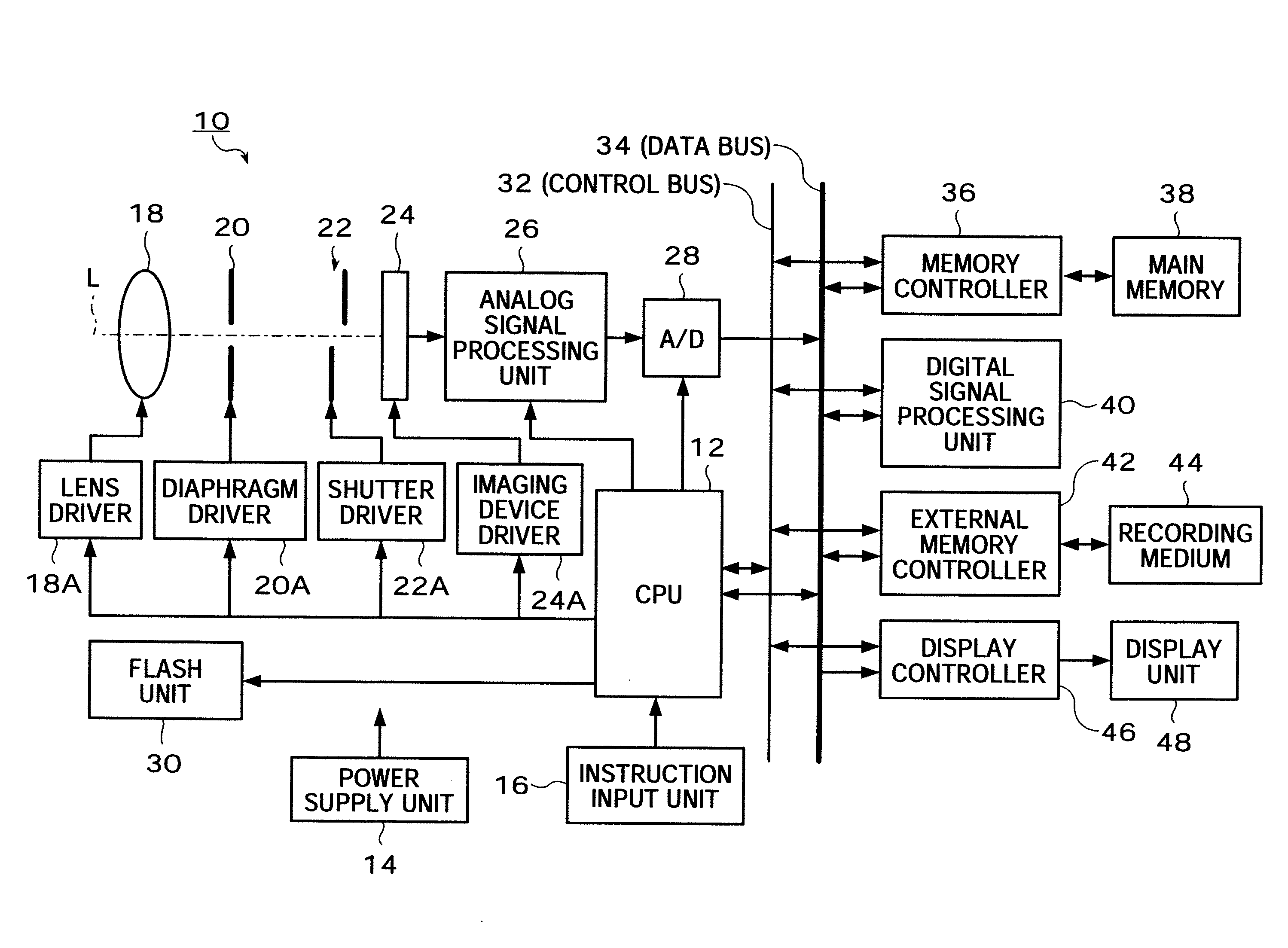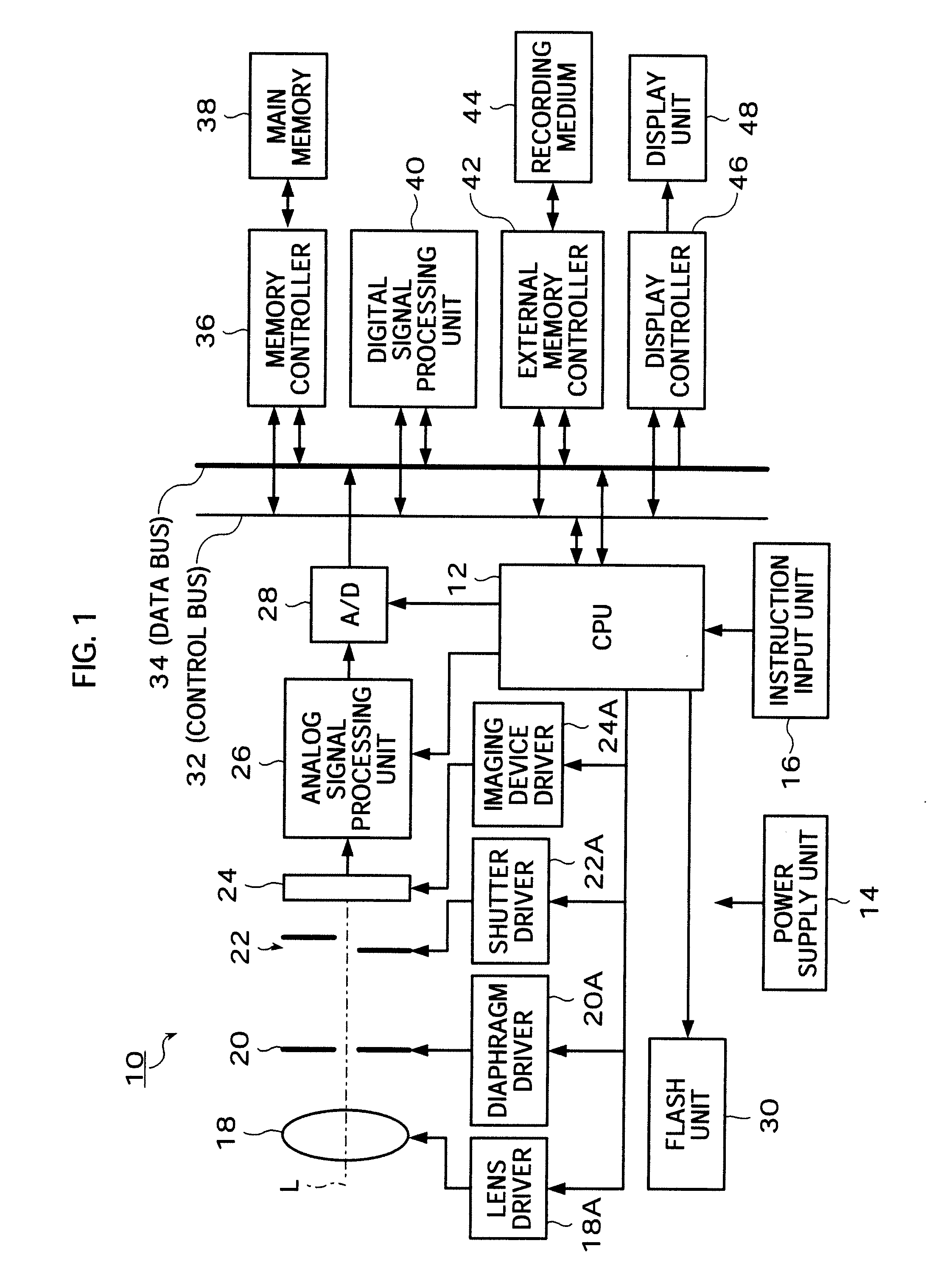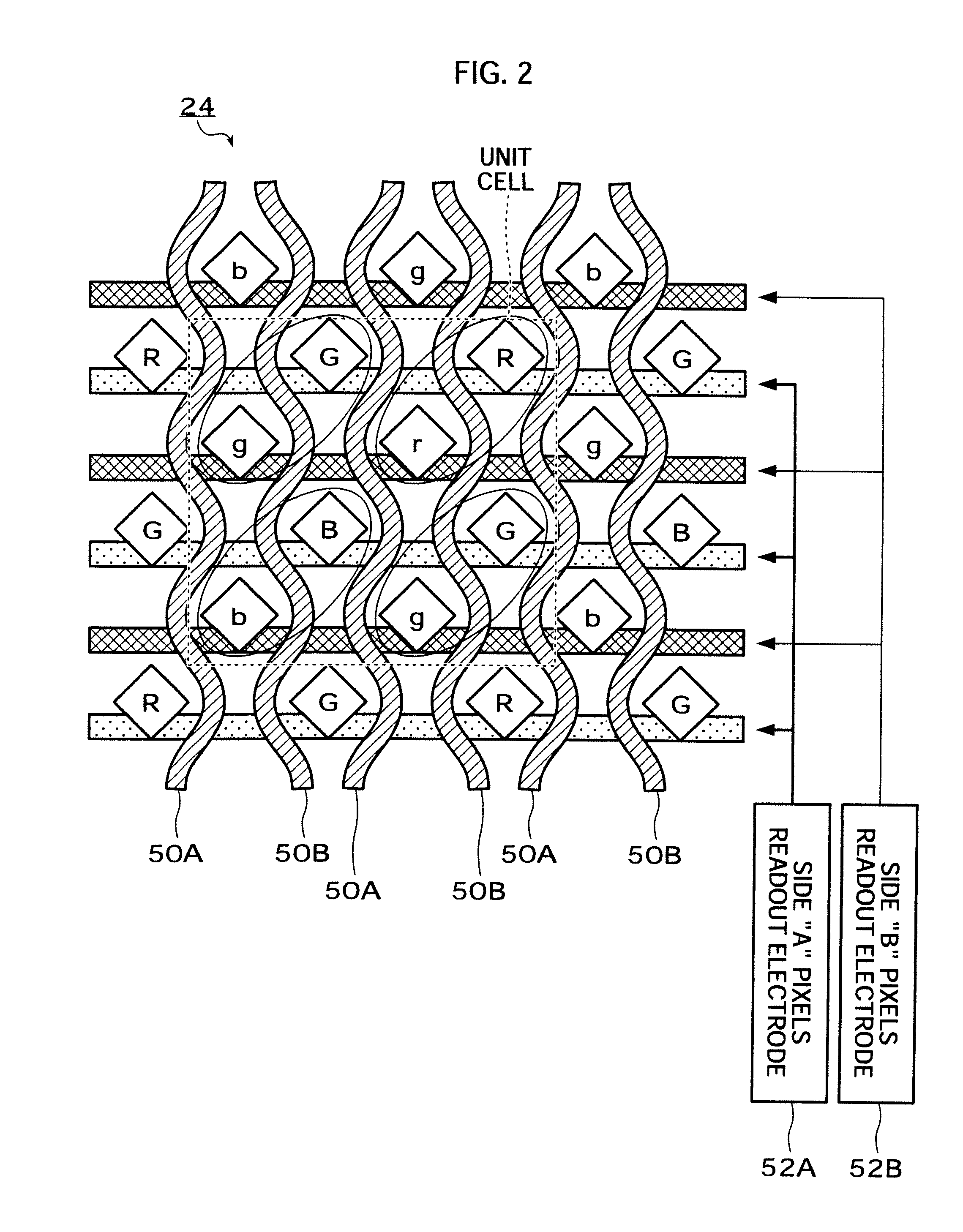Imaging apparatus and imaging method
a technology of imaging apparatus and image, applied in the direction of instruments, television systems, exposure control, etc., can solve the problem of loss of simultaneousity between images obtained by subject illumination imaging and non-illuminating imaging
- Summary
- Abstract
- Description
- Claims
- Application Information
AI Technical Summary
Benefits of technology
Problems solved by technology
Method used
Image
Examples
first embodiment
[0030]FIG. 1 is a block diagram showing an electronic camera of a first embodiment of the presently disclosed subject matter.
[0031]The electronic camera 10 of this embodiment includes a function of imaging and a function of reproducing and displaying a still image and a moving image.
[0032]A CPU (Central Processing Unit) 12 outputs an instruction to components of the electronic camera 10 via a control bus 32, and controls operation of the electronic camera 10.
[0033]The control bus 32 is a transmission line through which the instruction from the CPU 12 is transmitted to the components of the electronic camera 10. A data bus 34 is a transmission line through which various pieces of data such as an image signal are transmitted.
[0034]A power supply unit 14 includes a battery and a power supply circuit which converts electric power supplied by the battery into a prescribed voltage current, and supplies the current to the components of the electronic camera 10.
[0035]An instruction input un...
second embodiment
[0068]Next, a second embodiment of the presently disclosed subject matter will be described. It should be noted that the description on the same configuration as that of the above-mentioned first embodiment will be omitted.
[0069]FIG. 4 is a timing chart showing the second embodiment of a method for driving the imaging device in the consecutive imaging mode.
[0070]First of all, before exposure, OFD pulses are applied by the imaging device driver 24A to the imaging device 24, and charges accumulated in the pixels are drained to a side of the substrate on which the imaging device 24 is disposed, as shown in FIG. 4. Responsive to a half-press of the release button (S1-on), the above-mentioned imaging preparation process is executed, and the exposure time periods of the subject-illuminating imaging and the subject-non-illuminating imaging are determined.
[0071]Next, responsive to a full-press of the release button (S2-on), the application of the OFD pulses is terminated, and a flash pulse ...
PUM
 Login to View More
Login to View More Abstract
Description
Claims
Application Information
 Login to View More
Login to View More - R&D
- Intellectual Property
- Life Sciences
- Materials
- Tech Scout
- Unparalleled Data Quality
- Higher Quality Content
- 60% Fewer Hallucinations
Browse by: Latest US Patents, China's latest patents, Technical Efficacy Thesaurus, Application Domain, Technology Topic, Popular Technical Reports.
© 2025 PatSnap. All rights reserved.Legal|Privacy policy|Modern Slavery Act Transparency Statement|Sitemap|About US| Contact US: help@patsnap.com



